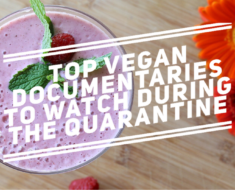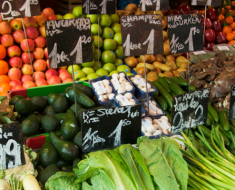
If you decide to go vegan for the long term or just to cleanse your body, listen to the following advice. They will make moving towards it much easier.
The desire to become a vegan doesn’t come up overnight. This is a balanced decision, an inner need, and a thirst for cleansing.
Most people are guided by ethical considerations regarding animals or simply want to cleanse the body of toxins.
Whatever the reason is, think carefully about how willing you are to give up animal products and cosmetics.
If your body does not feel an urgent need to receive certain foods and in the middle of the intended path you will not absorb the contents of the fridge, then read on carefully.
These 10 tips will help make the moving towards veganism barely noticeable.
Remember, when you are in a hurry, go around. Change your lifestyle and diet gradually without overwhelming your body.
1. Take your time
Of course, there are those who find it easy to make the decision to shift to an unusual diet, but far from everyone can do it. Lack of thoughtfulness of actions can only harm and postpone the moment when you can finally give up eating meat.
To begin with, it is better to set yourself completely achievable goals. For example, not to eat meat and fish for a day or a week, and then completely shift to vegetarianism. It is equally important to consider your options and ask yourself: Do I really want to become a vegetarian? Sometimes such a desire quickly passes, and therefore it takes time to mature the final decision.
2. Make your diet transition plan
Avoiding meat, like any other food restriction, requires careful study. First of all, you need to know what useful substances contained in the meat you will lose – and look for a replacement for them. At first, it is even important to calculate the required intake of proteins, fats, carbohydrates, calcium, vegan source of iron, and, based on this, draw up a meal plan for the day, and later just focus on it. Vegetarianism is most often not a diet, but a worldview, so you need to take this decision seriously, and not just exclude meat and fish from the diet, but try new products.
3. Start with your favorite foods
It may seem like you need to have some special culinary skills to prepare a vegetarian lunch, but in reality, it only takes imagination. Think about your favorite foods and think about how you can transform them – for example, replace meat with cheese, or add beans or soy instead of your usual protein source. You will be surprised how easy it can be to do without meat, if not just get rid of all the dishes with it, but come up with an equal and equally tasty substitute.
4. Invent something new
Once you’ve learned how to adapt to old dishes, you can start exploring new ones. Look for the simplest recipes based on familiar foods, or try something else you might not know. For example, chickpeas, couscous, and quinoa, loved by many vegetarians, are not familiar to everyone, although you can easily and quickly prepare new dishes from these products.
To surprise guests or just not let yourself get bored with even these products, try looking for something unusual in recipes from different countries. In the kitchens of many of them (mostly Asian), you can find vegetarian dishes that are not that difficult to prepare.
5. Change familiar dishes
Many believe that the only meat substitute for a vegetarian is soy meat, which looks the same and tastes the same. This may be a good decision to adapt to a new diet, but it’s never too late to invent your own way to avoid eating animal protein. Even those dishes that are cooked according to the original recipe with meat, such as bolognese or stuffed peppers, can be changed in your own way and add vegetables or mushrooms instead of meat and minced meat.
6. Come up with a substitute for meat dishes
You may simply not be aware of how easy it is to give up meat, even if you often eat away from home. In almost every restaurant you can find vegetarian dishes – and not two or three, but often a whole section on the menu! If you try to cook yourself, for a start, different types of cheese can serve as a substitute for meat, and later try to discover dishes with tofu, chickpeas, nuts.
7. Use soy
Of all the typical vegetarian foods, many people prefer soy – in ready-made meals, tofu, for example, becomes an excellent substitute for meat, especially in terms of protein content. For starters, it is better to use a marinade or sauce when cooking, so that soy products acquire a richer and more familiar taste.
8. Find Vegetarian Recipes
At first, when giving up meat still seems to be something unusual and frightening, you can calm down and diversify the diet with new recipes. If you suddenly feel bored with meat dishes, you can always buy soy meat or wheat sausage and cook something special. In specialized stores, you can even buy vegetarian pate and seaweed caviar, and make chickpea cutlets at home.
9. Feed your loved ones your food
To make it easier to master your new menu, try to cook not only for yourself but also to treat friends and relatives. Sometimes it is important to show that without meat, food can be even tastier and more satisfying – for this, you can cook dishes familiar to everyone, but according to vegetarian recipes. This will prevent you from moving away from loved ones because of your diet and will only help dispel the myth that vegetarians eat only vegetable salads.
10. Find your company
Even if no one in the family is ready to shift to non-meat food, do not despair – find interesting blogs about veganism, look for vegans among friends and invite them to cook together according to the recipes found. And do not forget to treat everyone with your new favorite dishes: giving up meat is often difficult because of the feeling of isolation, so when switching to veganism, as in any other business, you will definitely need support.
About the author
Melisa Marzett works for a resume editing service resume correction as a resume writer. Resume services are not the only thing she is involved in but into charity work just as well. She is an experienced traveler who lives in Indonesia at the moment and is one of the members of the Dari Jiwa initiative.






